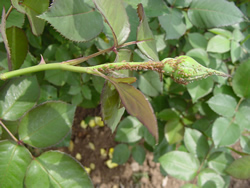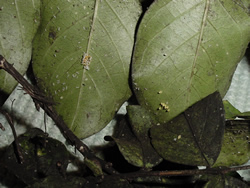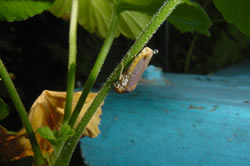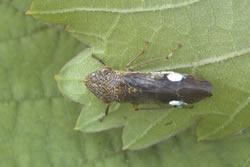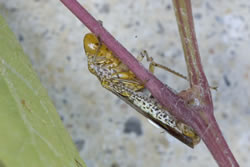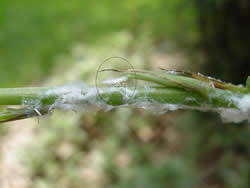Search
For The Answer
Click here to access our database of
Plant Answers
Search
For The Picture
Click here to access the Google database of plants
and insects
Information
Index
Alphabetical Listing of Topics, Recommendations
and Plants
Milberger's Nursery and Landscaping
3920 North Loop 1604 E.
San Antonio, TX 78247
210.497.3760
nursery@milbergersa.com
Open 9 to 6 Mon. through Sat.
and 10 to 5 on Sun.

Three exits east of 281, inside of 1604
Next to the Diamond Shamrock station
Please click map for more detailed map and driving directions.
NATURE'S COOL, REFRESHING "MIST" OR "SQUIRT" FROM ABOVE Calvin Finch and I have been doing a horticulture, radio call-in show for several years on KLUP-AM (AM 930). We receive many telephone calls (210-308-8867 or 1-866-308-8867) on Saturdays and Sundays from 12:00 p.m. to 2:00 p.m. from people who live all around South Texas and the U.S. (People can listen online all over the world by clicking on the Listen Live Now icon at the top of the page at: http://www.klup.com/ ) After six or seven years of doing these programs EVERY weekend, one might think we would get tired of answering the same old questions asked by the same callers. Interesting enough, that is not the case on the KLUP show. A case-in-point occurred several weeks ago when a person from Kerrville telephoned to ask us about "squirting" sprays of moisture from her crape myrtle trees early in the morning. I am well aware of crape myrtle and pecan "misting" but never have had "squirts" reported. I revealed the source of the "misting" from trees in a column I wrote in August, 1986. It reads: As I sat beneath a majestic pecan tree gently swinging with my lovely bride and enjoying the cool late evening breezes, I was pleased by a gentle mist which steadily fell upon my exposed flesh. After struggling with the turmoil of life's adversities, I considered this cooling mist from above as a much-deserved manna from heaven. Then the sudden jolt back to the world of reality! There were no clouds in the sky and trees don't "manufacture" rain. Alias, the day ended with a disgusting experience - - I had been honey-dewed upon! Some folks may not mind being dewed upon but maybe that is because they do not understand what honeydew is - - read on! When honeydew from a tree begins to fall, one should quickly realize that there are insects above doing naughty, unmentionable things. "Honeydew" is a classy word meaning "a sweet substance secreted by aphids and other juice-sucking insects." "Secrete" means to be "excreted as a waste" and the last thing that I will tolerate is to be excreted upon by aphids - - I don't care if the secretion does have a fancy sounding name like honeydew! Aphids build to high populations in mid-summer. Although the actual severity of damage from this pest is widely debated, the normal level of leaf performance can be impaired. The primary mode of damage is from leaf shading by a mold that grows over the upper leaf surface of affected leaves. As the aphid feeds on the undersides of leaves, "honeydew" or sugar water is excreted by the pest. This sticky liquid falls down through the tree and is deposited on the upper leaf surface of leaves over which the aphids fed.
Those of you who do not appreciate being "dewed" upon should stay away from the free "misting" experience as long as it lasts since aphids and other sucking insects are practically impossible to control. It seems that a Neem oil product or a summer oil (Volick) application is as good as anything but, sometimes because of tree size, an application of an insecticide is not practical. But all of this explanation of the "misters" does not explain the Kerrville "squirters". The answer was provided by an astute listener-the "misters" are aphids and the "squirters" are leaf-hoppers (sometimes called Sharpshooters). You may have seen some of these elusive devils scurrying around to the opposite side of limbs of okra, hibiscus or Turk's Cap as you approach the plant. They are extremely hard to get a good picture of. John Farris has taken the best digital image I have ever seen of a leaf-hopper-one image actually has the drop of honeydew accumulating on its behind, ready to be squirted. This leaf-hopper is Oncomotopia orbono, a mainly eastern species that is also known to vector Pierce's Disease (PD).
I think most folks know and recognize aphids but
some of us are not as familiar with leafhoppers (Sharpshooters).
To find out more about leafhoppers, you can read the leafhopper
webpage at: A complete key to leaf-hopper identification can
be found at: The main reason for the special interest in leafhoppers is that these little suckers spread virus and diseases to a multitude of plant materials. In grape producing states such as Texas, leafhoppers are the main vectors (that which spreads a disease) which distribute the bacterium Xylella fasitiosa which causes Pierce's Disease (PD) and the slow decline of most wine grape varieties. The primary vector of PD is the glassy-winged sharpshooter (Homalodisca coagulata) and is also pictured on the web-version of this column. The PD problem is completely explained at: http://piercesdisease.tamu.edu/ and http://www.cnr.berkeley.edu/xylella/
Whether you are being "misted" upon or "squirted" upon, when honeydew begins to fall, you now know that there are insects above doing naughty, unmentionable things on you. Another word of caution-I think the term "honeydew" is derived from the stickiness of the secreted plant sap on surfaces and NOT from the sweetness of the excrement. The person from Kerrville confirmed that the taste was bitter rather than sweet. This could be the difference between aphid and leafhopper secretion-try some of each and let me know!!
|




